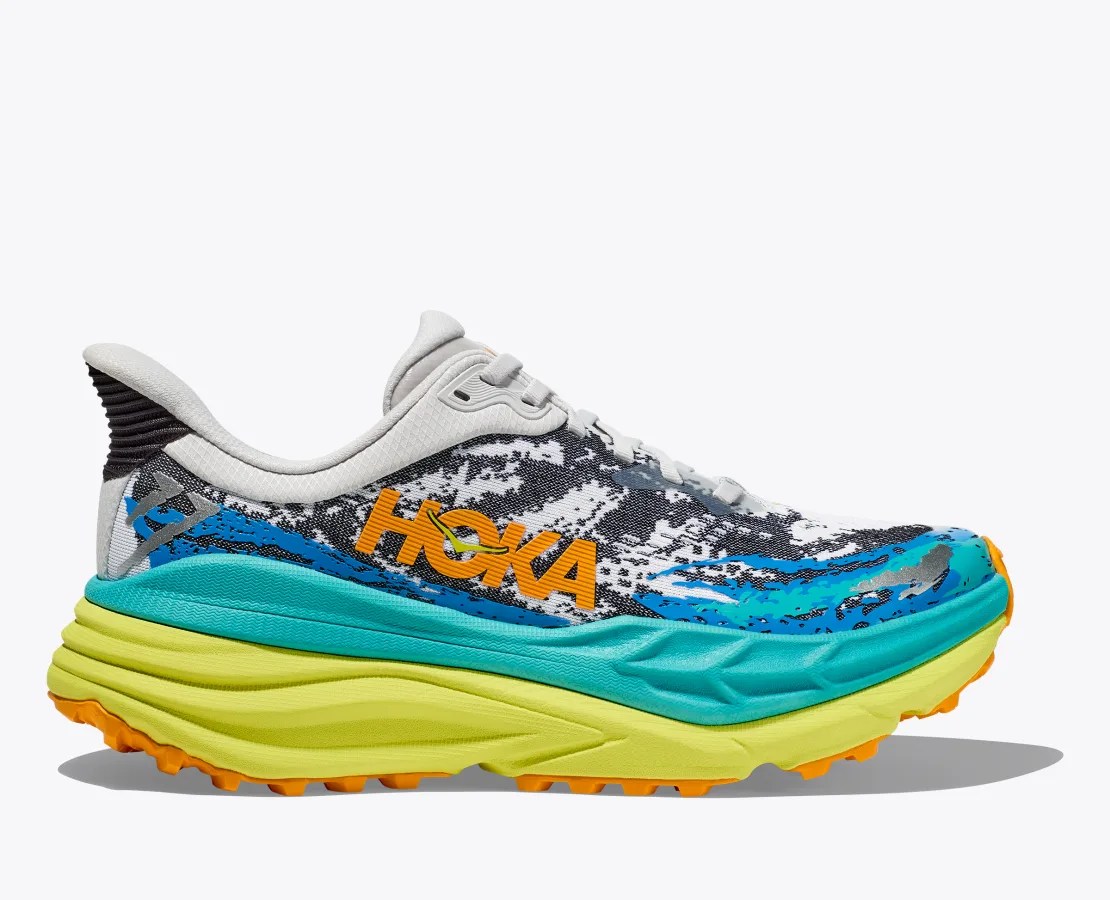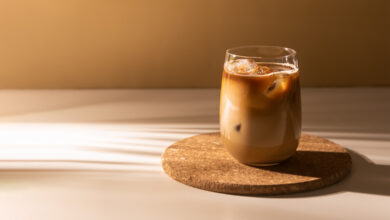7 APMA-Approved Sneakers for Every Occasion

It’s usually good practice to listen to cardiologists for heart-health advice, or optometrists for how to take good care of your eyeballs. It would also make sense, then, to look to podiatrists (aka foot doctors) for the shoe recommendations.
While you may not always have a podiatrist on speed dial, the American Podiatric Medical Association (APMA)—an organization of the nation’s best and brightest doctors of podiatric medicine—takes its time to review shoes on the market to clue consumers in on what’s actually worth their money. If they’re up to snuff, they can earn the APMA’s official Seal of Acceptance. Think of it as a shortlist of shoes *actually* worth your time and attention.
“The APMA is an organization that represents thousands of podiatrists across the country,” says Doug Tumen, DPM, FACFAS, a board-certified podiatrist based in New York. “If a shoe is AMPA-accepted, then the organization actually believes that those shoes are healthy and good for people and their feet.”
We tapped Dr. Tumen and two other podiatrists for their recommendations from said list of APMA-accepted shoes. Find their suggestions below to make shoe shopping that much easier.
The best APMA-accepted sneakers, at a glance:
- Best for walking: Klaw, 528, $148
- Best for running: Brooks, Ghost 15, $140
- Best for long distances: New Balance, Fresh Foam X 880v13, $160
- Best for hiking: Hoka, Stinson 7, $170
- Most versatile: Hoka, Clifton 9, $145
- Best for weightlifting: Kinis, Apollo Pro Trainer, $195
- Most natural fit: Altra, Paradigm 6, $136
In This Article
How sneakers get APMA acceptance (and why they’re better for consumers)
Now, it’s important to clarify that a brand (like Hoka or New Balance, for instance) can’t get acceptance for all the sneakers they make. Instead, the brand must submit each sneaker for acceptance.
For a sneaker to receive the APMA Seal of Acceptance, there are some pretty strict requirements, says Bruce Pinker, DPM, a foot and ankle surgeon at Progressive Foot Care. “If it’s footwear, [the shoes] are usually very well made,” he says, pointing out that medication and insoles can also have the seal. “The shoes have probably passed some tests or there is research to show that they perform well and are very effective.”
“The APMA wants to approve sneakers or shoes that potentially will have some optimizations or benefits to walking or running. They will be comfortable and they will be good for your feet,” adds Nelya Lobkova, DPM, board-certified podiatrist and owner of Step Up Footcare in New York City.
That said, just because a shoe doesn’t have the APMA seal doesn’t mean it’s a bad shoes; it just verifies the accepted shoes have been reviewed by medical professionals and that they meet the organization’s standards. That said, podiatrists still think APMA-accepted sneakers are better for consumers.
7 pairs of APMA-accepted sneakers that podiatrists recommend
As a note, the shoes we’ve listed below are of our own conception. The APMA sorts sneakers into categories—like running shoes, hiking shoots, boots, sandals, etc.—but they do not assign “best of” or rankings to any of the shoes they approve.
Best for walking:

Klaw, 528 Walking Shoe — $148.00
Available sizes: 6-11, in half sizes and two widths
Walkers—the Klaw 528 sneaker was made for you. Each shoe has unparalleled arch support and a deep heel cup, which provides superior comfort without weighing you down. The lightweight status makes them the perfect shoes to wear if you’re on your feet all day. (Plus, as a writer who’s enamored with words, I appreciate that Klaw is walk spelled backwards.)
Dr. Lobkova, who is the biomechanical consultant for Klaw, says that these sneakers are great for walking and standing, but you should probably keep them off rockier terrains. “The 528 is best for everyday walking,” says Dr. Lobkova, “It’s all leather, and you don’t really want to run in all leather” because it isn’t very breathable, she adds. One downside is that they’re a bit polarizing for their chunky, borderline orthopedic look. Still, they’re comfy, which is all that really matters.
Colors: 4
- Extremely comfortable
- Deep heel cup for stability
- Designed with the help of a podiatrist
- Lightweight
- Pricey
- Leather isn’t that breathable
Best for running:

Brooks, Ghost 15 — $140.00
Available sizes: 5-13, in half sizes and four widths
“Brooks is well known for running,” according to Dr. Pinker. “The Ghost is very durable and is well designed to support long-distance runners especially,” he adds. Weighing in at 9.1 ounces, the Brooks Ghost 15 is among the lightest running shoes. Don’t take that to mean that they’re not comfy, though; you absolutely still get the soft cushion that you need from a good running shoe.
Pros and ConsIn addition to having the APMA Seal of Acceptance, the Ghost 15 also won a Runner’s World shoe award in 2023. From an environmental perspective, this shoe’s upper is made of recycled material—like plastic bottles that would’ve otherwise gone to a landfill. Lastly, that there are four width sizes and more than 40 colorways, meaning there’s plenty to choose from to find your perfect fit (some colorways are limited edition, so make sure to check if the one you want is in stock.) It’s important to note, however, that these shoes are best for road running, so you’ll probably want to keep them off the trail, too
Read the full review here.
Colors: 45
- Ample colors and widths
- Lightweight
- Made from recycled materials
- Supportive
- Pricey
- Not suitable for trail running
Best for long distances:

New Balance, Fresh Foam x 880v13 — $140.00
Available sizes: 5-12, in half sizes and two widths
Both podiatrists and the APMA love New Balance sneakers for their style, support, and function. A number of models have the APMA seal of acceptance, but if you’re on the hunt for a long-distance running sneaker, check out the Fresh Foam x 880v13, which is a step up from the 880v12s that podiatrist, Dana Canuso, DPM, previously recommended to W+G.
At just 8.4 ounces, they’re featherlight, so they won’t weigh you down on those later miles. Even more, they’re incredibly supportive and a bit stiffer than other options to give you long-lasting stability. Bonus: They’re made with 3 percent bio-based content that’s better for the planet.
Colors: 3
- Great for distance running
- Supportive
- Extremely lightweight
- Made from bio-based materials
- Pricey
- A bit stiffer than other options
Best for hiking:

Hoka, Stinson 7 — $170.00
Available sizes: 5-11, in half sizes
Podiatrists love Hoka shoes for walking, running, standing—just about everything. But if you’re planning on spending a lot of time on the trails and want an APMA-accepted companion, look no further than these bad boys.
I recently wore the Hoka Stinson 7 for some trail running in the Alps and I was quite impressed by the stability it offers. Since I’m a big fan of Hoka, I’m already used to the large soles, but these also come with a chunkier midsole for supreme shock absorption.
What was a little trickier to adjust to, though, was the texture of the soles themselves. Since the sneakers are meant for all terrain, including roads and trails, the bottom almost resembles cleats—which can be tricky to get used to. But once you do, you’ll feel like you’re able to run fast because the shoe has awesome traction.
Colors: 2
- Supreme shock absorption
- Excellent traction
- Supportive
- Can be used for road or trail running
Most versatile:

Hoka, Clifton 9 — $145.00
Available sizes: 5-12, in half sizes and two widths
Earlier this year, I actually wrote extensively about how much I love the Clifton 9. It’s such a lightweight sneaker (it only weighs 7.3 ounces for women!) that is somehow also the brand’s most cushioned shoe to date. It’s available in 11 colorways for women and 16 for men, so there are definitely tons of options here.
While I loved running in these shoes, they’re even better to walk in because they’re so lightweight. I also hit the gym in them a couple of times. I found that they worked just as well on the treadmill as they did on the road. They’re also good for arm and core workouts. (They aren’t, however, good to do leg-based workouts in or to go hiking in since they don’t have the right type of grip at the sole. ) That said, they’re some of most versatile APMA-accepted sneakers you can get your feet into, making them an excellent addition to any wardrobe.
Colors: 12
- Versatile—good for walking, running, hiking, and more
- Extremely lightweight
- Comfortable
- Rocker bottom for propulsion
- Pricey
- Not great for lifting or leg-based workouts
Best for weightlifting:

Kinis, Apollo Pro Trainer — $195.00
Available sizes: XS-L2
When you are weightlifting, you want a shoe that’s as flat as possible. This helps to provide the stability you need to keep the correct form, and it’s better for your feet since they get the same amount of support from heels to toes. For instance, if you were to wear shoes with a rocker bottom, your heels would get more support than your toes—and that’d make it difficult to keep your balance when doing, say, a squat or deadlift.
Enter, the Apollo Pro Trainer from Kinis, which is APMA-accepted for lifting. Obviously, the price tag is nothing to sneeze at. At almost $200, the Kinis Apollo Pro Trainer is the most expensive shoe on this list. However, the shoe is also machine washable and moisture-wicking, so it’s definitely worth the extra cash if you can afford it. The one downside of this shoe is the sizing. Instead of having sizes 5-12 and going by half sizes, the Apollo Pro Trainer runs from XS (sizes 5-6) to L2 (sizes 11.5-12). The website recommends sizing up if you’re between half sizes.
Colors: 2
- Designed for lifting and training
- Balance-friendly
- Machine washable
- Lightweight and moisture-wicking
- Pricey
- Runs small—size up
Most natural fit:

Altra, Paradigm 6 — $136.00
Available sizes: 5.5-12, in half sizes and three widths
We picked the Altra Paradigm 6 as the best for width sizing because it offers what the brand calls its “Foot Shape” technology. This technology is “designed to address a range of unique fits, differing in width from heel to toe box” that’s meant to “give your feet more space.”
You can get the Altra Paradigm 6 in an original fit, which is the roomiest of all three options. You can also get it in a standard, which is essentially the medium size. Lastly, you may consider getting it in slim, which you might want to do if you have narrow feet. Just note, sizes run a little small, so make sure to keep that in mind when you’re adding a pair to your cart.
Colors: 6
- Available in three “Foot Shapes” to help feet fit better
- Designed with running in mind
- Supportive
- Lightweight and responsive
- Pricey
- Runs small—size up
Our editors independently select these products. Making a purchase through our links may earn Well+Good a commission.



